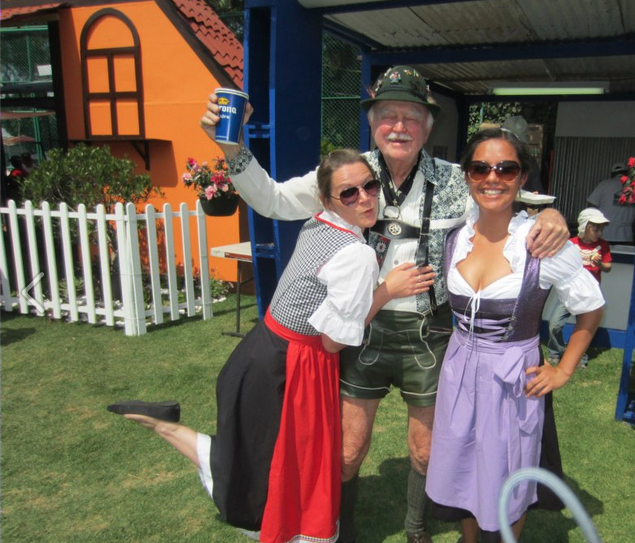 What started as a wedding celebration for the crown prince Ludwig on October 12, 1810, is now not only the most famous, but also the largest funfair in the world.
What started as a wedding celebration for the crown prince Ludwig on October 12, 1810, is now not only the most famous, but also the largest funfair in the world.
It’s celebrated every year in Munich, state capital of Bavaria with millions of people enjoying good German beer, food and fun music. Most of the people are Bavarians and tourists from around the world, rather than Germans from other parts in Germany. In fact, it’s not even a Fest celebrated in the rest of the country, and yet, it is celebrated at various faraway places around the world.
Germans like to travel and some of them call other parts of the globe home. They also love their roots, their language, das Bier und das Oktoberfest, which is why you can find fun Oktoberfest parties in countries you would never expect them – like Mexico.
Personally, I’ve never been to the original Oktoberfest, and in fact I’m intimidated by the masses of beer mugs – 1 Liter, equals approximately 33 ounces is in one mug and people have several of those in one night!
I have been to the Mexican Oktoberfest version, though. Each year the German Club in Mexico City invites Germans and all German lovers to celebrate this event. You will find many Germans there, who live in Mexico working as teachers in one of the biggest German schools in the world outside Germany or in one of the several large corporations, such as Volkswagen. But you will mainly find Mexicans, who love German beer and Würstl (yummy sausages served with mustard and Sauerkraut).
Of course it has also become a small market place for German products, traditional candies, baked goods, bread and chocolate.
However, what is the funniest part of it is that although it originated as the Oktoberfest celebration, it has become a fusion of Mexican Fiesta with German Fest. The music is not German at all, which is good, because in Munich you don’t dance, you schunkel - a happy movement from right to left and left to right and can be performed while sitting or standing. But if you know Mexicans, they hear music and want to dance, and they demand tropical rhythms like Salsa, their classics, fun songs and dance music. Although you can listen for a bit to the German music ensemble in Lederhosen (traditional leather shorts) and Almhut (traditional hat) you can expect masses on the dance floor when the local musical group starts to play and sing.
Germans and Mexicans demonstrate their long lasting and rooted friendship and the love for each other that has existed for many decades. Quite often, you can find a Mexican guy trying to teach a German girl how to dance to hot Latin music, while the German girl in Dirndl (traditional dress) teaches how to hold the beer mug and say Ein Prosit! while looking the other in the eyes.